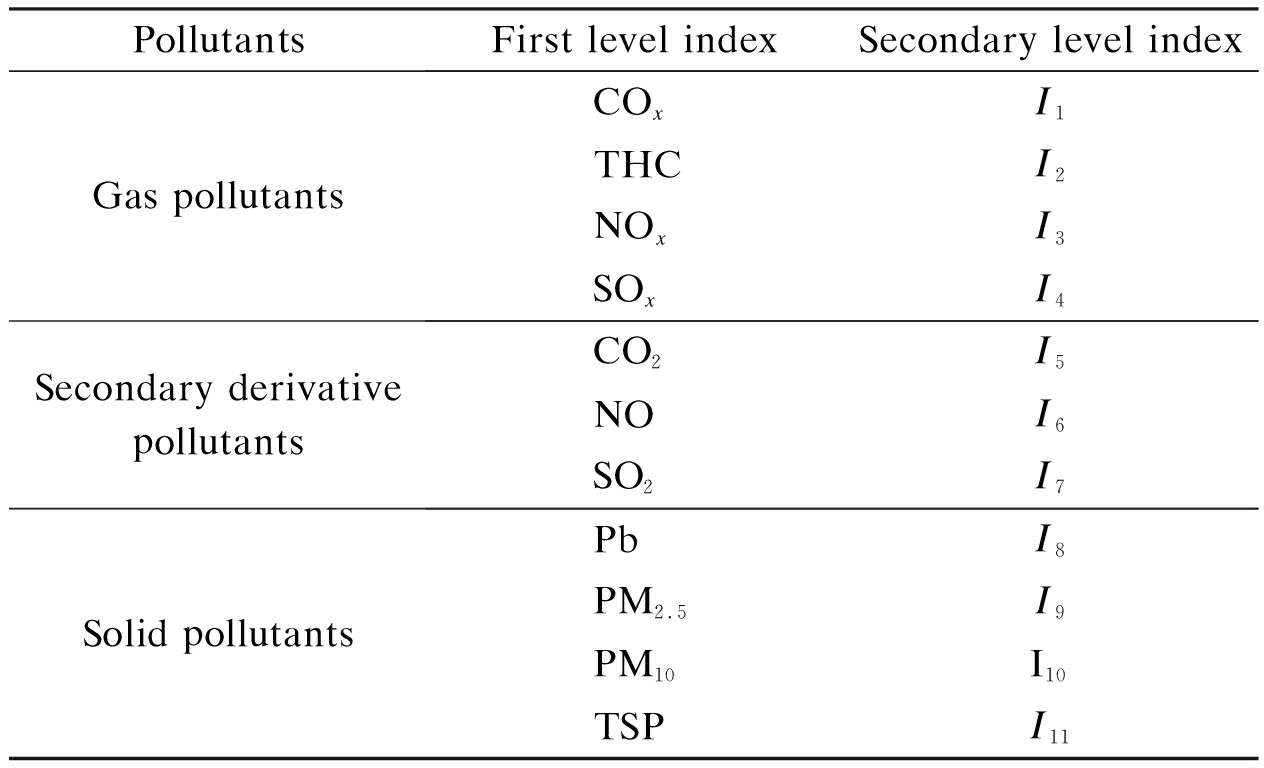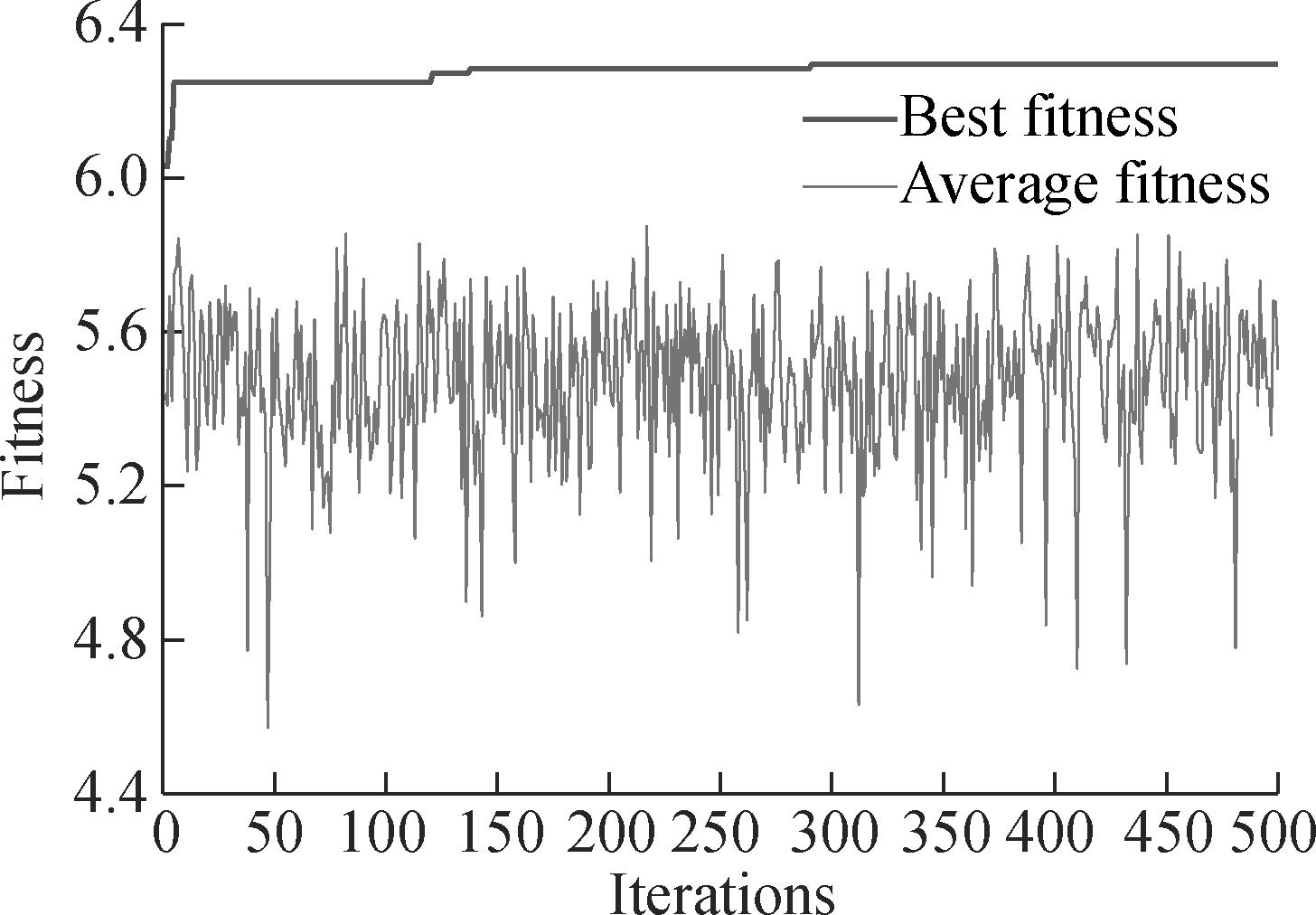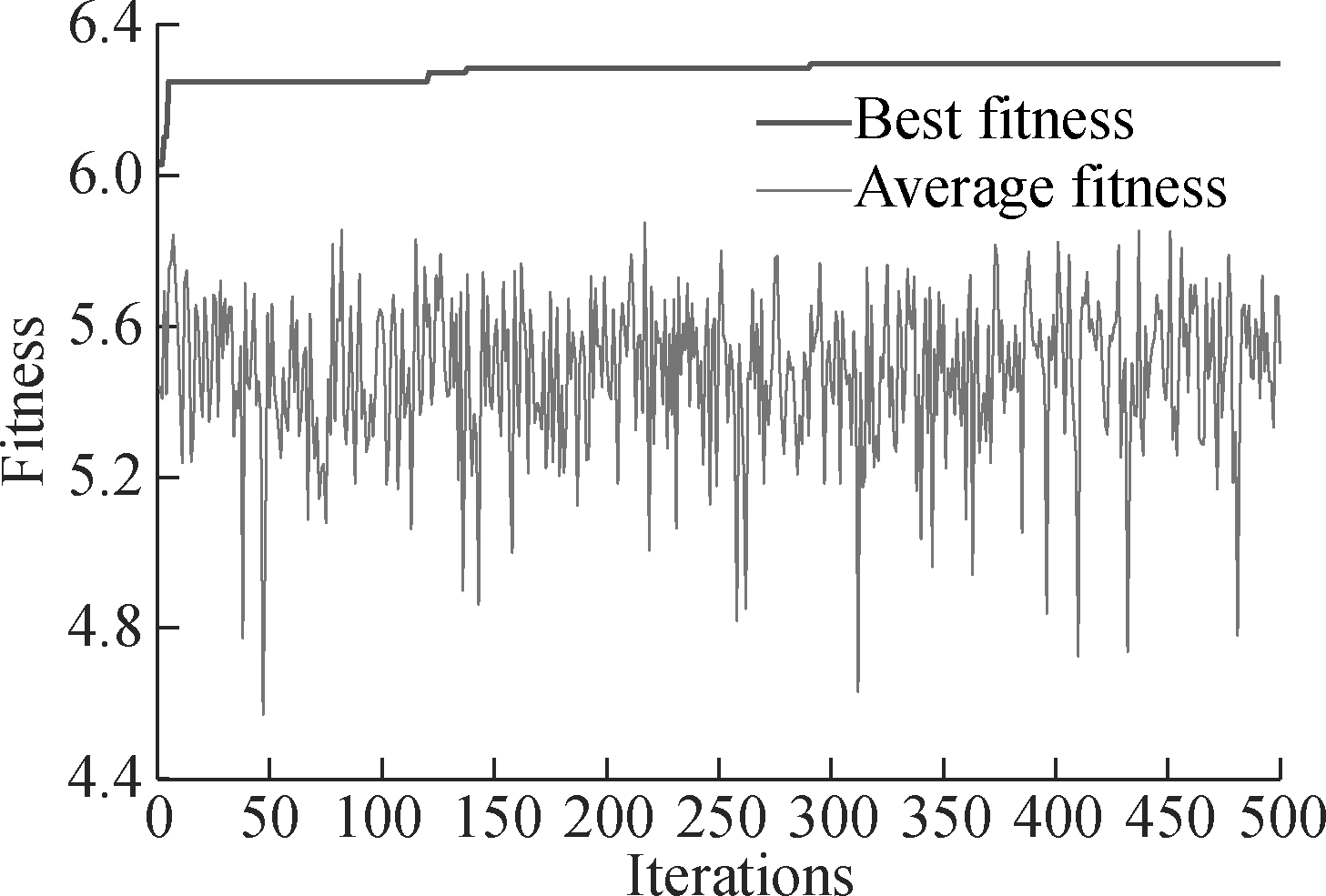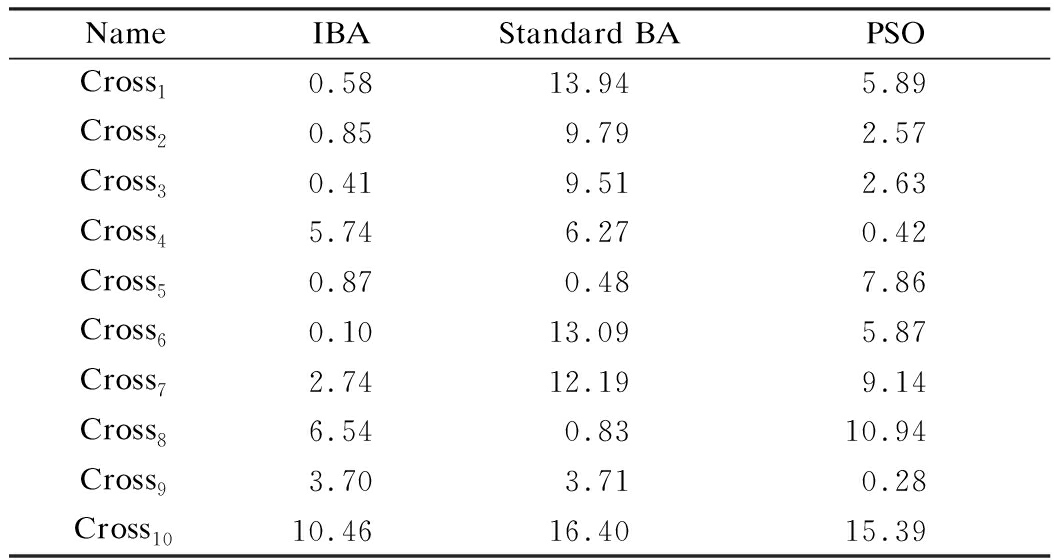Vehicle emission contains hydrocarbons (CnHm), carbon monoxide (CO), nitrogen oxides (NOx), lead (Pb), sulfur dioxide (SO2) and particulate matter (PM), and many of which are damaging the health of humans[1-2]. Hence, how to monitor and reduce air pollution caused by vehicle emissions effectively has become one of the hot issues of current research. In order to monitor vehicle emission factors and total emissions, some effective emission analysis models have been proposed. MOBILE is a classic macroscopic emission analysis model, which is typically used to estimate vehicle emissions according to the average speed in the wide-area[3-4]. Kheirbek et al.[5] estimated PM2.5-attributable mortality and morbidity from on-road vehicle generating air pollution in New York City using high-spatial-resolution emissions estimates. Doolan and Muntean[6] presented a novel approach to reduce vehicle emissions—EcoTre. Schneidemesser et al.[7] found the significant potential for NO2 reductions. The research on vehicle emission in China has also achieved certain results. Zhao et al.[8] derived pollutant mission factors from mixed vehicles, cars, and taxis. ETC (electronic toll collection) testing shows that the design satisfies severe emission regulations with greater sustainable and environmentally friendly practical application[9]. In fact, when calculating the emission of urban motor vehicles, although the research scope of vehicle emission models in China has gradually shifted from laboratory to real road emissions, there are relatively few achievements in this field. Therefore, this paper focuses on the evaluation of vehicle emissions pollution at urban intersections.
Projection pursuit (PP) is a new statistical method for processing and analyzing high-dimensional data. It has been applied in many fields, such as environmental quality assessment, atmospheric science and water conservancy planning. Jiang et al.[10] presented a general approach for coherency detection in bulk power systems using the PP theory. Pires et al.[11] developed an expansion of space-distributed time series by statistically independent uncorrelated sources. In this paper, the projection pursuit model based on the improved bat algorithm is proposed to evaluate and analyze air pollution caused by vehicle emissions at intersections.
1 Measurement Index for Vehicle Emission Pollution at Intersections
Vehicle exhausts contain more than 100 different compounds. The main pollutants are harmful substances such as CnHm, CO, NOx, Pb, SO2 and PM, as well as secondary pollutants produced by photochemical reactions[12]. The main atmospheric pollutants at intersections are shown in Tab.1.
Tab.1 Measurement index of vehicle emissions on air pollution

PollutantsFirst level indexSecondary level indexGas pollutantsCOxI1THCI2NOxI3SOxI4Secondary derivativepollutantsCO2I5NOI6SO2I7Solid pollutantsPbI8PM2.5I9PM10I10TSPI11
2 Projection Pursuit Model of Vehicle Emission at Intersections
In this section, based on the projection pursuit algorithm, we establish the projection pursuit evaluation model of vehicle emissions on air pollution at intersections.
Suppose that the measured value of intersection i is xij(i=1,2,…,n;j=1,2,…,m ) under the measurement index j; n is the number of intersections; m is the number of indicators for the emissions of air pollution to the vehicle, and then we obtain the original matrix X=(xij)n×m. The algorithm for the model is as follows:
Step 1 Normalization of sample data for air pollution at intersections. We normalize the sample data by the following formula before modeling:
yij=1-xij·[maxxij+minxij]-1
(1)
Suppose that a={a1,a2,…,a3} is the unit projection vector, and then yij is an intersection-dimensional eigenvalue Zi.
(2)
Step 2 The projection index function of vehicle emissions on air pollution at intersections. The inter-class distance function for the assessment of air pollution by vehicle emissions at intersections is defined as:
(3)
The inter-class density function for the assessment of air pollution by vehicle emissions at intersections is defined as:

(4)
where rik is the distance between Zi and Zk, rik ![]()
The projection index function of vehicle emissions about air pollution at intersections is obtained:
F(a)=f1(a)·f2(a)
(5)
Step 3 Optimized projection index function of vehicle emissions on air pollution at intersections. The objective function of vehicle emissions on air pollution at intersections is as follows:
maxF(a)=f1(a)·f2(a)
(6)![]()
(7)
Step 4 Comprehensive pollution index for assessment of air pollution by vehicle emissions at intersections. We regard ![]() as the weight coefficient of each evaluation index and construct the comprehensive pollution index for the assessment of air pollution by vehicle emissions at intersections as
as the weight coefficient of each evaluation index and construct the comprehensive pollution index for the assessment of air pollution by vehicle emissions at intersections as
(8)
3 Projection Index Function based on Improved Bat Algorithm
Projection function optimization plays a deciding role in the success of the projection pursuit model. In this section, we apply the improved bat algorithm to the projection function optimization to assess the air pollution caused by vehicle emissions and obtain the optimal solution of the evaluation model.
In order to prevent the search solution from falling into the local optimal solution, the updated formulas for loudness Ai and rate ri of pulse emissions are as follows:
(9)![]()
(10)
where α is the attenuation coefficient of loudness and it usually defaults to 0.9; βi∈[0,1] represents a random attenuation coefficient of loudness that obeys uniform distribution. The search update formula is as follows:
Q=1-exp(-|p-fmax|)δi
(11)
(12)
where Q is the adaptive step size factor; P is the average of the fitness values obtained each time; δi is a random vector that obeys uniform distribution; ![]() when updating the location. k is the best solution after each optimization.
when updating the location. k is the best solution after each optimization.
4 Case Analysis
In this section, 10 intersections (recorded as cross1, cross2,…, cross10) in a specific area of Nanjing are taken as the study object. The monitoring value of 10 intersection was obtained by field data collection (see Tab.2). The monitoring values of each indicator of 10 crossings are substituted into the evaluation model.
Tab.2 Monitoring data of 10 intersections of Nanjing city mg/m3

NameI1I2I3I4I5I6I7I8I9I10I11Cross10.234 10.233 50.561 20.345 60.101 10.280 70.821 10.233 40.678 90.543 10.254 6Cross20.373 40.267 10.557 10.405 10.201 90.290 70.763 10.244 50.680 30.540 90.235 6Cross30.366 50.276 60.567 80.388 10.123 10.360 10.810 70.301 10.657 30.601 30.345 7Cross40.476 30.365 40.389 10.390 20.123 50.350 10.823 10.321 10.645 10.497 30.478 2Cross50.771 10.276 80.581 70.378 10.200 10.341 20.822 10.345 10.700 10.498 10.346 5Cross60.235 60.378 80.662 10.378 90.123 10.312 20.791 30.345 70.599 30.651 30.236 5Cross70.435 10.235 10.399 10.345 10.200 30.321 40.800 10.309 70.700 40.734 10.346 7Cross80.678 10.276 40.789 10.560 10.213 10.301 10.789 90.346 80.698 10.467 30.349 1Cross90.346 70.337 10.892 30.472 10.273 10.234 40.790 90.290 70.598 40.567 90.610 1Cross100.356 70.238 10.237 50.274 10.245 10.234 10.801 10.290 80.701 60.602 30.291 7
4.1 Fitness curves of projection vectors function
According to the bat algorithm of the projection function proposed in Section 3, the search process based on the improved bat algorithm and the standard bat algorithm is implemented on the Matlab platform. We first use the PSO algorithm to solve the proposed mode, and then use the BA algorithm to solve the proposed model. After the iteration of the operation, the curves of projection vector fitness are obtained, as shown in Fig.1.
As can be seen from Fig.1, the improved BA is better than the standard BA and PSO in the optimization result.
4.2 Error comparison between three algorithms
In this section, we will calculate the assessment error of the pollutant emissions from 10 intersections under the three algorithms and the measured data to verify the effectiveness and superiority of the proposed improved bat algorithm. The results are shown in Tab.3.
It can be seen from Tab.3 that the average error rate of the projection pursuit analysis model is 6.098 6% using the PSO algorithm. Therefore, in terms of accuracy, the IBA is better than the PSO and the standard BA, and it is feasible for assessing the air pollution.
5 Conclusions
1) The impact of vehicle emissions on air pollution is effectively evaluated and analyzed. A projection pursuit model is also proposed based on the improved bat algorithm.
2) The results of the case analysis show that the proposed model is superior to the standard BA in convergence speed and recognition accuracy.
3) This paper provides a theoretical basis and technical support for improving urban air quality and building low-carbon transportation. It also provides a novel method and ideas for vehicle emissions-related research.

(a)

(b)

(c)
Fig.1 Curves of projection vector fitness. (a) PSO; (b) Improved BA;(c) Standard BA
Tab.3 Comparison of error rates using different optimization algorithms
%

NameIBAStandard BAPSOCross10.5813.945.89Cross20.859.792.57Cross30.419.512.63Cross45.746.270.42Cross50.870.487.86Cross60.1013.095.87Cross72.7412.199.14Cross86.540.8310.94Cross93.703.710.28Cross1010.4616.4015.39
[1] Liu Z, Li L, Zhang Y J. Investigating the CO2 emission differences among China’s transport sectors and their influencing factors[J]. Natural Hazards, 2015, 77(2): 1323-1343. DOI:10.1007/s11069-015-1657-2.
[2] Meng C, Li M H, Li Q, et al. Characterizing the spatio-temporal exposure and health risks of polycyclic aromatic hydrocarbons in an oilfield, China[J]. Human and Ecological Risk Assessment: An International Journal, 2018, 24(4): 971-990. DOI:10.1080/10807039.2017.1405337.
[3] Liu S,Hellendoorn H, de Schutter B. Model predictive control for freeway networks based on multi-class traffic flow and emission models[J]. IEEE Transactions on Intelligent Transportation Systems, 2017, 18(2): 306-320. DOI:10.1109/tits.2016.2573306.
[4] Chen X W, Hadi M, Xiao Y, et al. Development of macroscopic emission estimation model based on microscopic operating modes[J]. Transportation Research Record: Journal of the Transportation Research Board, 2016, 2570: 39-47. DOI:10.3141/2570-05.
[5] Kheirbek I, Haney J, Douglas S, et al. The contribution of motor vehicle emissions to ambient fine particulate matter public health impacts in New York City: A health burden assessment[J]. Environmental Health, 2016, 15: 89. DOI:10.1186/s12940-016-0172-6.
[6] Doolan R, Muntean G M. EcoTrec: A novel VANET-based approach to reducing vehicle emissions[J]. IEEE Transactions on Intelligent Transportation Systems, 2017, 18(3): 608-620. DOI:10.1109/tits.2016.2585925.
[7] von Schneidemesser E, Kuik F, Mar K A, et al. Potential reductions in ambient NO2 concentrations from meeting diesel vehicle emissions standards[J]. Environmental Research Letters, 2017, 12(11): 114025. DOI:10.1088/1748-9326/aa8c84.
[8] Zhao D T, Chen H, Shao H P, et al. Vehicle emission factors for particulate and gaseous pollutants in an urban tunnel in Xi’an, China[J]. Journal of Chemistry, 2018, 2018: 1-11. DOI:10.1155/2018/8964852.
[9] Jiang T, Jia H J, Yuan H Y, et al. Projection pursuit: A general methodology of wide-area coherency detection in bulk power grid[J]. IEEE Transactions on Power Systems, 2016, 31(4): 2776-2786. DOI:10.1109/tpwrs.2015.2475401.
[10] Jiang J B, Li D G. Theoretical analysis and experimental confirmation of exhaust temperature control for diesel vehicle NOx emissions reduction[J]. Applied Energy, 2016, 174: 232-244. DOI:10.1016/j.apenergy.2016.04.096.
[11] Pires C A L, Ribeiro A F S. Separation of the atmospheric variability into non-Gaussian multidimensional sources by projection pursuit techniques[J]. Climate Dynamics, 2017, 48(3/4): 821-850. DOI:10.1007/s00382-016-3112-9.
[12] Cui J G, Xu T L, Tian J L. Air pollution by engine exhausts and its secondary pollutant in the daytime[J]. Journal of Environment and Health, 2007, 24(5): 333-334. DOI:10.16241/j.cnki.1001-5914.2007.05.022. (in Chinese)